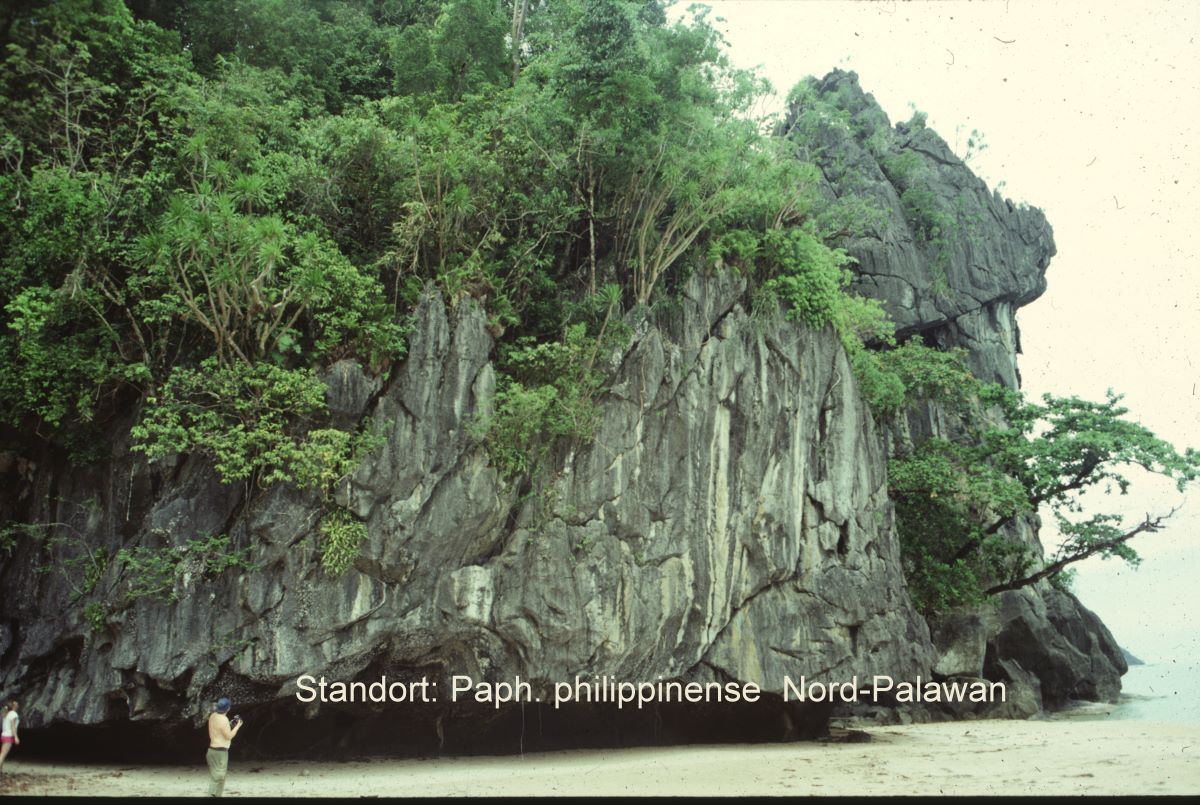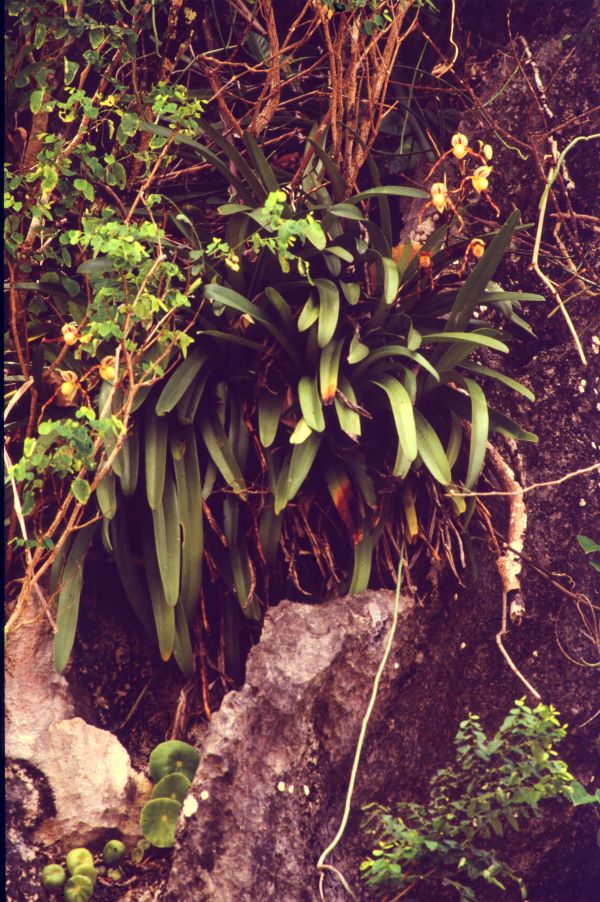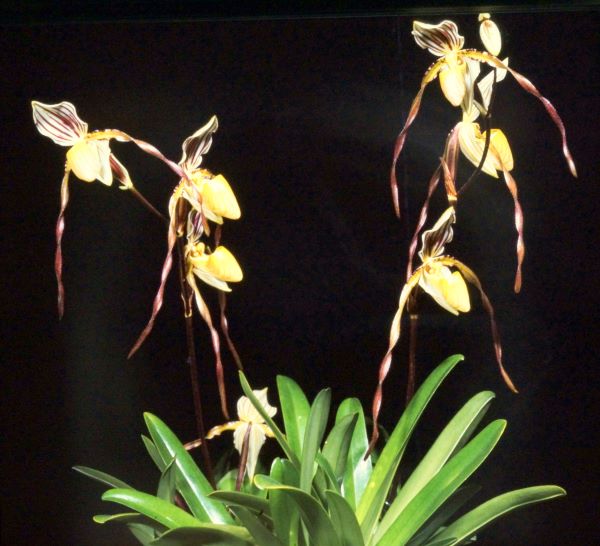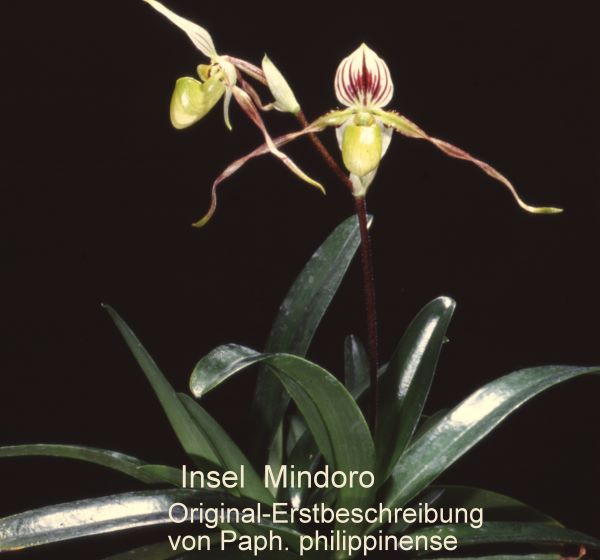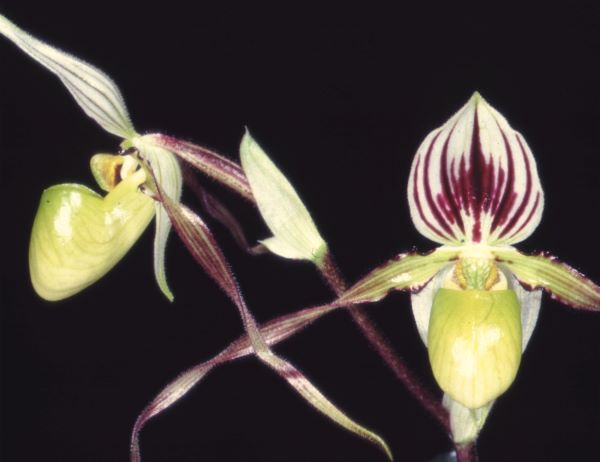Paphiopedilum philippinense STEIN
Section:Coryopedilum
Paph. philippinense ist auf vielen philippinischen Inseln verbreitet, es gibt sie aber auch in Nord Sabah (Malysia) auf Borneo.
For this reason, several varieties have been described, some of which are "traded" as separate species or simply as varieties.
Paph. philippinense - from Luzon to Mindanao, Sabah (Borneo)
Paph. roebelinii - Luzon
Paph. laevigatum
Paph. palaw(an)ense - Palawan
In order to have a better overview of the individual species/varieties, I have shown these plants below. In addition, the plants can also be found under their respective names.
Unfortunately, these different species have been crossed with each other in the past - making identification almost impossible.
Paph. philippinense ist in der warmen Abteilung des Gewächshauses zu kultivieren und benötigt möglichst viel Licht. Es ist ein möglichst grober Pflanzstoff mit hohem mineralischen Anteil zu verwenden, da diese Pflanzen sehr schnell zu Fäulnis neigen.
The naming around Paph. philippinense reads like this:
Cypripedium (later then Paphiopedilum) philippinense (RCHBb. f.) STEIN 1862
In 1864 VEITCH found orchids of this species on the island of Guimares. These plants were shipped to England and named there by BATEMAN as Cypripedium laevigatum (BATEMAN).
20 years later, on behalf of the Sanders company, ROEBBELEN collected plants that were named Cypripedilum roebbelinii (RCHB.f.) in honor of ROEBBELEN.
In 1894 it was recognized that these plants were probably just local site variants of Cyp. philippinense and the name of the first description therefore applies = Cyp. philippinense.
On closer examination of this topic, CRIBB found in 1987 that only the "species" named after ROEBBELEN had sufficient deviations (narrower foliage, long, twisted petals, pointed shoe, slightly smaller flowers) from the nominal shape:
Paphiopedilum philippinense var. roebellinii (RCHB. f.) CRIBB
The European taxonomists follow CRIBB (some even recognize it as a separate species) - the American ones tend not to.
In conclusion, it must be said that distinguishing the individual species is extremely difficult and leaves room for speculation.



